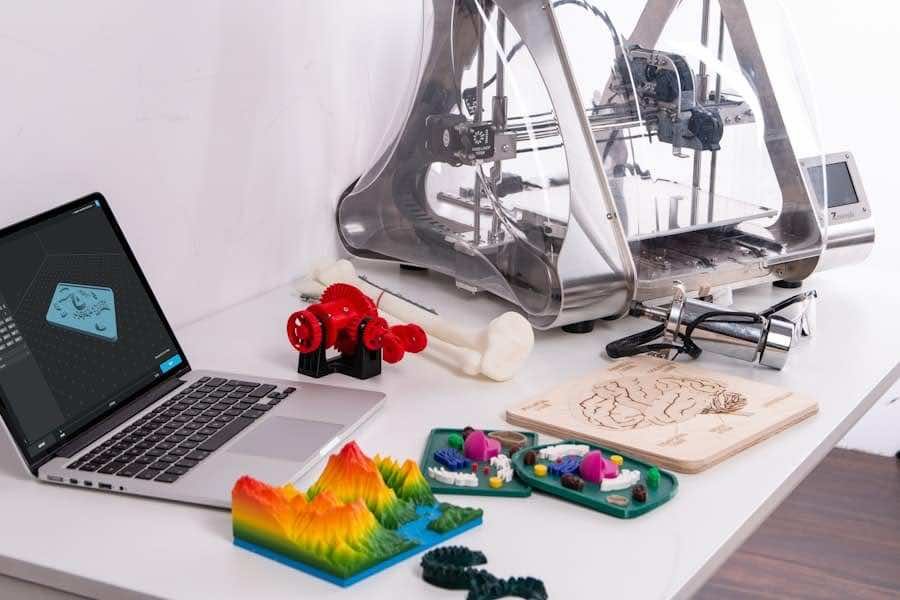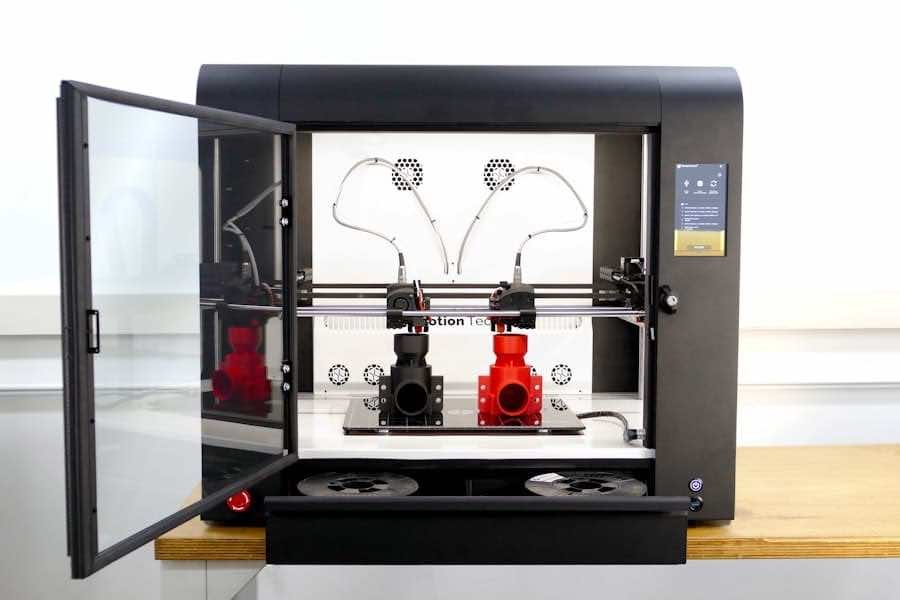Rapid prototyping is a crucial methodology in the realm of product development, characterised by the swift creation of a scale model or prototype of a product. This approach allows businesses to visualise and test their ideas quickly, facilitating a more iterative design process. The essence of rapid prototyping lies in its ability to transform abstract concepts into tangible forms, enabling teams to explore various design options and functionalities without the extensive time and resource commitments typically associated with traditional prototyping methods.
By leveraging technologies such as 3D printing, computer-aided design (CAD), and simulation software, organisations can create prototypes that are not only functional but also closely resemble the final product. In the context of business, rapid prototyping serves as a bridge between ideation and production. It empowers teams to gather feedback early in the development cycle, allowing for adjustments based on user input or market demands.
This iterative process is particularly beneficial in industries where consumer preferences can shift rapidly, as it enables companies to remain agile and responsive. Furthermore, rapid prototyping fosters collaboration among cross-functional teams, as designers, engineers, and marketers can engage with physical models, leading to more informed decision-making and a shared understanding of the product vision.
Summary
- Rapid prototyping is a method used in business to quickly create a scaled-down version of a product or service to test its feasibility and functionality.
- The benefits of rapid prototyping include reduced time to market, cost savings, improved product quality, and increased innovation and creativity.
- Rapid prototyping tools and technologies include 3D printing, computer-aided design (CAD) software, and virtual reality (VR) simulations.
- Rapid prototyping speeds up product development by allowing for quick iterations, feedback gathering, and problem-solving, leading to faster innovation and market entry.
- Challenges in rapid prototyping can be overcome by addressing issues such as technical limitations, resource constraints, and resistance to change within the organisation.
The Benefits of Rapid Prototyping
The advantages of rapid prototyping are manifold, significantly impacting both the efficiency and effectiveness of product development. One of the most notable benefits is the reduction in time-to-market. By enabling teams to create and test prototypes quickly, businesses can accelerate their development cycles, allowing them to launch products faster than competitors who rely on traditional methods.
This speed is particularly advantageous in industries such as technology and consumer electronics, where being first to market can establish a significant competitive edge. Moreover, rapid prototyping enhances the quality of the final product. By iterating on designs based on real user feedback, companies can identify flaws or areas for improvement early in the process.
This proactive approach reduces the likelihood of costly revisions during later stages of development or after product launch. Additionally, the ability to test prototypes in real-world scenarios provides invaluable insights into user experience and functionality, ensuring that the final product aligns closely with customer expectations and needs.
Rapid Prototyping Tools and Technologies

A variety of tools and technologies underpin the rapid prototyping process, each contributing unique capabilities that enhance design and development efforts. One of the most prominent technologies is 3D printing, which allows for the creation of complex geometries and intricate designs that would be challenging or impossible to achieve through traditional manufacturing methods. With advancements in materials science, 3D printing now supports a wide range of materials, from plastics to metals, enabling prototypes that closely mimic the properties of final products.
In addition to 3D printing, computer-aided design (CAD) software plays a pivotal role in rapid prototyping. CAD tools enable designers to create detailed digital models that can be easily modified and optimised before physical prototypes are produced. These models can be subjected to simulations that predict performance under various conditions, further refining the design before any material resources are committed.
Other technologies such as virtual reality (VR) and augmented reality (AR) are also emerging as powerful tools in rapid prototyping, allowing teams to visualise and interact with prototypes in immersive environments, thereby enhancing understanding and collaboration.
How Rapid Prototyping Speeds Up Product Development
The speed at which rapid prototyping accelerates product development is one of its most compelling attributes. Traditional prototyping methods often involve lengthy processes that can delay project timelines significantly. In contrast, rapid prototyping allows for concurrent engineering practices where multiple aspects of product development occur simultaneously.
For instance, while one team is working on a prototype’s design, another can be conducting market research or preparing for production logistics. This parallel approach not only shortens development cycles but also fosters innovation. Teams are encouraged to experiment with different ideas without the fear of significant financial loss or wasted resources.
The iterative nature of rapid prototyping means that feedback loops are shorter; teams can quickly implement changes based on testing results or stakeholder input. This agility is particularly beneficial in fast-paced markets where consumer preferences evolve rapidly, allowing businesses to pivot their strategies effectively.
Overcoming Challenges in Rapid Prototyping
Despite its numerous advantages, rapid prototyping is not without challenges. One significant hurdle is the potential for miscommunication among team members regarding design intent or functionality. As prototypes evolve through multiple iterations, it is crucial for all stakeholders to remain aligned on objectives and specifications.
Misunderstandings can lead to wasted resources or misdirected efforts, ultimately undermining the benefits of rapid prototyping. Another challenge lies in the selection of appropriate materials and technologies for prototyping. While 3D printing offers versatility, not all materials are suitable for every application.
Companies must carefully consider factors such as strength, durability, and cost when choosing materials for their prototypes. Additionally, as technology continues to advance at a rapid pace, keeping up with the latest tools and techniques can be daunting for organisations. Continuous training and investment in new technologies are essential to ensure that teams can leverage the full potential of rapid prototyping.
Rapid Prototyping in Different Business Sectors

Rapid prototyping has found applications across a diverse array of business sectors, each reaping unique benefits tailored to their specific needs. In the automotive industry, for instance, manufacturers utilise rapid prototyping to develop components and systems that require rigorous testing for safety and performance. By creating prototypes of parts such as dashboards or engine components, engineers can assess fit and functionality before committing to full-scale production.
In the healthcare sector, rapid prototyping has revolutionised the development of medical devices and equipment. Companies can create custom prosthetics or surgical instruments tailored to individual patient needs through 3D printing techniques. This not only enhances patient outcomes but also streamlines regulatory approval processes by providing tangible evidence of design efficacy during evaluations.
Similarly, in consumer goods, brands leverage rapid prototyping to test packaging designs or new product concepts with target audiences before launching them into the market.
Best Practices for Implementing Rapid Prototyping
To maximise the benefits of rapid prototyping, organisations should adhere to several best practices that enhance its effectiveness within their product development processes. First and foremost is fostering a culture of collaboration among cross-functional teams. Encouraging open communication between designers, engineers, marketers, and other stakeholders ensures that everyone is aligned on project goals and can contribute valuable insights throughout the prototyping process.
Additionally, organisations should invest in training their teams on the latest tools and technologies related to rapid prototyping. Familiarity with CAD software, 3D printing techniques, and simulation tools enables teams to work more efficiently and creatively when developing prototypes. Establishing clear guidelines for feedback collection during testing phases is also essential; structured feedback mechanisms help ensure that insights are actionable and lead to meaningful improvements in subsequent iterations.
The Future of Rapid Prototyping in Business
As technology continues to evolve at an unprecedented pace, the future of rapid prototyping appears promising and full of potential. Emerging technologies such as artificial intelligence (AI) and machine learning are poised to revolutionise how prototypes are designed and tested. AI algorithms can analyse vast amounts of data from previous prototypes to predict performance outcomes more accurately, enabling designers to make informed decisions early in the development process.
Moreover, advancements in materials science will likely expand the range of materials available for rapid prototyping, allowing for even more complex designs with enhanced properties. Biodegradable materials and smart materials that respond to environmental changes could become commonplace in prototype development, aligning with growing sustainability concerns among consumers and businesses alike. As these trends continue to unfold, rapid prototyping will undoubtedly play an increasingly integral role in shaping innovative products across various industries while driving efficiency and responsiveness in product development processes.
Rapid prototyping in business is a crucial tool for companies looking to innovate and stay ahead of the competition. This process allows businesses to quickly create and test new product ideas before investing significant resources into full-scale production. As discussed in the article What is Custom Software Development, rapid prototyping can also be applied to software development, enabling companies to create and test new digital solutions efficiently. By embracing rapid prototyping, businesses can adapt to changing market demands and deliver innovative products and services to their customers.
FAQs
What is rapid prototyping in business?
Rapid prototyping in business is the process of quickly creating a physical model or prototype of a product or part using 3D printing or other manufacturing technologies. This allows businesses to test and iterate on their designs before committing to full-scale production.
What are the benefits of rapid prototyping in business?
Rapid prototyping in business offers several benefits, including faster product development, reduced costs, improved design quality, and the ability to test and validate ideas before investing in full-scale production.
How does rapid prototyping work in business?
Rapid prototyping in business typically involves using computer-aided design (CAD) software to create a digital model of the product or part, which is then converted into a physical prototype using 3D printing or other manufacturing techniques.
What industries can benefit from rapid prototyping in business?
Rapid prototyping in business can benefit a wide range of industries, including manufacturing, automotive, aerospace, healthcare, consumer goods, and more. Any industry that requires product development and testing can benefit from rapid prototyping.
What are some common rapid prototyping technologies used in business?
Some common rapid prototyping technologies used in business include 3D printing, CNC machining, laser cutting, and injection molding. Each technology has its own strengths and limitations, and the choice of technology depends on the specific requirements of the project.
